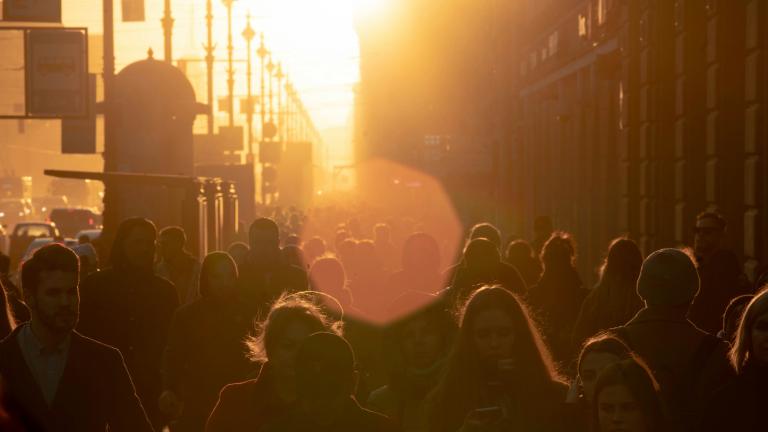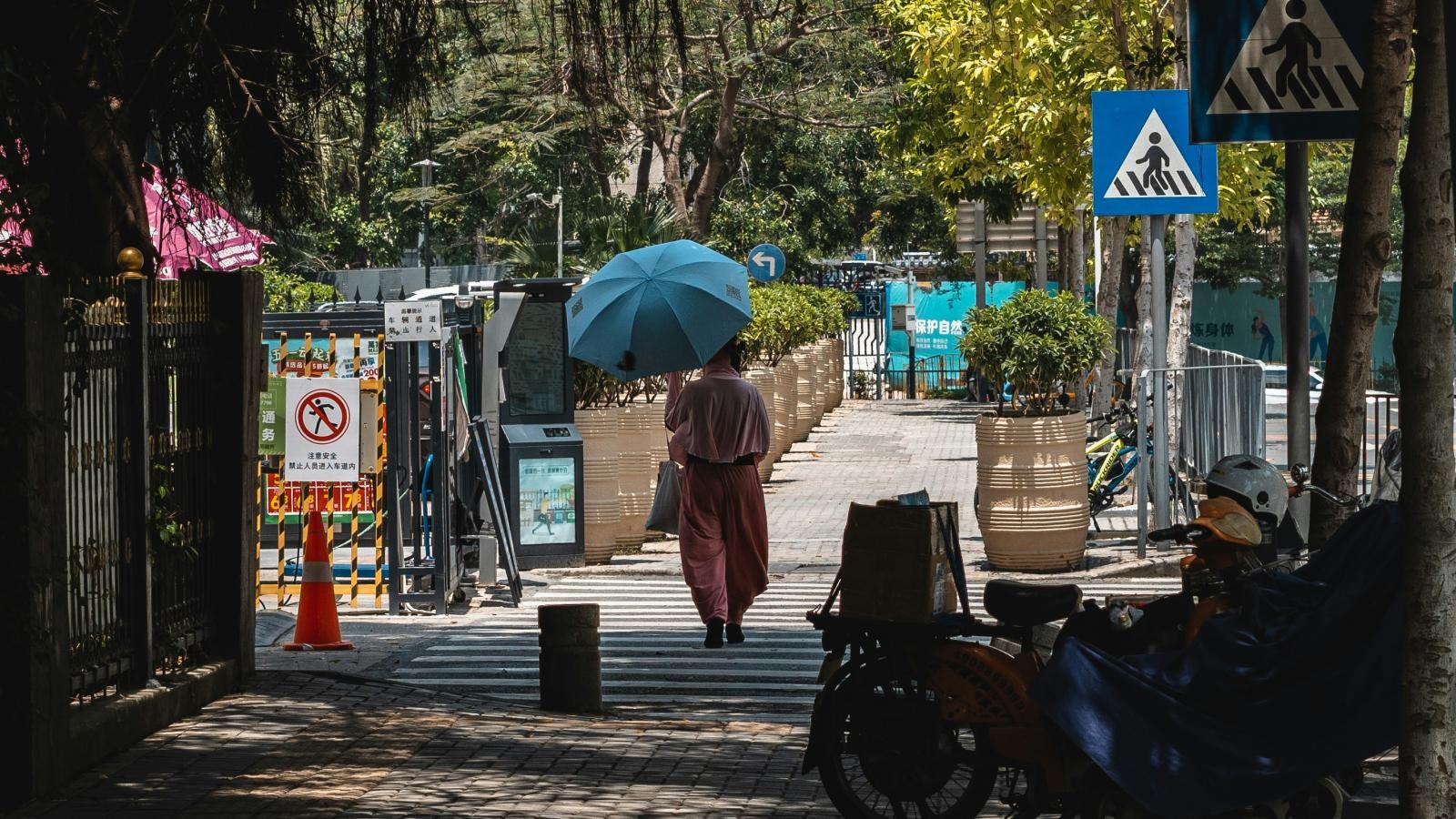Analysis
How Cities are Beating the (Urban) Heat
From innovative data analytics to urban greening, cities like Cape Town and Medellín are tackling the growing extreme heat crisis head-on.
In January of this year, the central business district of Cape Town, South Africa endured a historically brutal day of heat: one day, temperatures climbed to 44 degrees Celsius—the highest ever measured in the city.
But on that same day, people in other parts of the city, while still sweltering, were able to catch some relief. “There are certain areas in the city that are naturally hotter, and they tend to experience heat waves or high heat days in isolation from the rest of the city,” said Candes-Lee Arendse, a Professional Officer for Climate Change Planning, Risk and Resilience, at the City of Cape Town. While plentiful trees, shade, and green spaces reduce extreme heat in some neighborhoods, “dense urban areas, like low-income communities and informal settlements, lack tree canopy cover and green spaces,” she added, which increases the intensity of heat that people experience.
Traversing cities like Cape Town, which are facing more and more days of unbearable heat, one might notice these differences intuitively. There’s a clear contrast between spending a blistering day in a park, shaded by trees and cooled by vegetation, and walking through the exposed asphalt landscape of a downtown area. But for cities to fully comprehend their current and future heat risks, and to develop effective strategies to mitigate and adapt to these threats, they need detailed and nuanced data. In a recent webinar co-hosted by UrbanShift, World Resources Institute, UN Environment Programme and the Cool Coalition, experts from cities and global institutions focused on improving urban resilience dove into why heat is such a complex challenge for cities to address, and how innovative approaches to data collection and analysis can inform context-specific approaches to tackling it.

The Challenge of Urban Heat
Just over halfway through the year, it’s evident that 2024 is poised to become the hottest year on record. “We’ve witnessed unbearable heat waves with temperatures going beyond 50 degrees centigrade [sic] in many regions, and we see the devastating impacts: this is a health crisis, it’s disrupting food systems, and straining critical infrastructure,” said Gulnara Roll, Head of the Cities Unit at UNEP. These impacts, she said, most acutely affect the already vulnerable. In urban areas, this crisis is magnified: Cities are heating up at twice the global average rate.
Recognizing the immediacy of this threat, UN Secretary-General António Gutierrez recently issued a call to action on extreme heat. While painting a vivid picture of the all-encompassing threat, he pointed to the need for a special focus on urban areas. "Countries, cities, and sectors need comprehensive, tailored Heat Action Plans, based on the best science and data,” he said. While heat is a universal challenge, tackling it effectively requires specificity. Cities have a wide toolkit from which to draw to cool themselves down, but what elements they implement and how effective they will be depends largely on context. That is precisely where data comes in.
Designing Data-Informed Approaches to Heat
To understand the essential role of data in cities’ efforts to address heat, let’s return to Cape Town. In partnership with World Resources Institute’s Data for Cool Cities initiative, funded by Google.org, Cape Town has been undertaking an extensive effort to gather a range of detailed data on both temperature and elements of the urban from—from green space and tree cover to buildings and paved surfaces—that affect the way people experience heat. This is often referred to as thermal comfort. This metric considers not only the air temperature in a particular location, but also factors like surface reflectivity, shade, and airflow to determine the cumulative impact of heat on the human body. Assessing urban heat through the lens of thermal comfort enables cities to grasp a more nuanced and actionable understanding of their citizens’ heat risk. But to arrive at this metric, cities need to be able to gather and synthesize a broad range of data.
For Cape Town’s Central Business District—where temperatures spiked to 44 degrees Celsius in January—WRI has produced detailed datasets that model thermal comfort in the neighborhood over the course of a day. At 3 pm, for instance, with the sun striking from overhead, the buildings cast little shade, leaving most of the district exposed and scalding. “We can really see the fact that each land use area has a distinct curve of how it absorbs and re-releases heat over the course of an afternoon,” said Ruth Engel, Environmental Health and Extreme Heat Data Scientist at WRI Ross Center for Sustainable Cities. “We can drill down to a very local level to understand what it means to stand in a particular space, and then we can translate that back to urban features.”
WRI is working closely with cities around the world to understand their heat challenges and their action plans. Over the course of interviews with officials from environmental, urban planning, climate action, and public health divisions across 50 cities, WRI ascertained that cities have two primary needs for heat-related data, said Saif Shabou, Data Product Manager at WRI Ross Center for Sustainable Cities. “[Cities] want to know how to prioritize areas for planning effective cooling infrastructure, and they also want to be able to build scenarios for simulating the cooling benefit of different urban interventions that they can implement.” WRI is working on developing a Heat Resilient Infrastructure Data Platform that can help cities build and explore heat resilience scenarios and communicate the rationale behind mitigation projects they pursue.
How Cities are Responding to the Heat Crisis
When it comes to extreme urban heat, “the bottom line is that we cannot air condition our way out of this problem,” said Jaya Dhindaw, Director of the Cities Program at WRI India. Around the world, cities are exploring and implementing solutions to cool themselves down and equitably equip residents with tools to empower themselves against the challenges of urban heat.
In Indian cities, where around 80% of the workforce is informally employed and consequently more exposed to the elements, and where up to 47% of people are vulnerably housed in slums, governments and organizations are exploring both responsive and proactive approaches to heat. To meet immediate health and safety needs, cities are building cooling shelters to provide residents with respite and hydration. In Jodhpur, the city recently unveiled a net-zero shelter equipped with misting fans, solar panels, and a wind tower that passively expels hot air and ushers in a cooler breeze. Alongside these near-term efforts, Indian cities are doubling down on efforts to add greenery and nature-based solutions to improve their resilience to both heat and floods. “There's a whole movement going on across the world called de-paving, where people are looking at making their surfaces permeable and digging out surfaces which are very heavily concretized,” Dhindaw said.
Halfway across the world, Medellín, Colombia is already showing the benefits of investing in urban greenery. The city’s renowned Green Corridors program, introduced in 2016, created an interconnected network of over 30 major streets lined with trees, vertical gardens, and planted areas, said Esteban Jaramillo Ruíz, Natural Resources Deputy Secretary for the city of Medellín. With this concerted effort to add greenery along major streets, the city was able to accomplish a range of outcomes at once: Both temperature and pollution rates have fallen around the corridors and, as a result, the number of cycling and walking journeys along them have increased. Over the course of the project, the city trained 107 people from disadvantaged communities as gardeners and employed 2,600 more workers. For Medellín, Jaramillo said, the Green Corridors are just one element of the city’s efforts to embrace nature-based solutions: They are also exploring green roofs and cultivating endemic species in parks and green spaces across the city.

The Global Movement to Tackle Heat
While cities pursue their own solutions to heat, Eleni Myrivili, the Global Chief Heat Officer, at UN Habitat and a Nonresident Senior Fellow at Arsht-Rock highlighted the importance of cities and leaders tapping into the growing global movement to combat heat.
The UN Secretary-General's recent Call to Action on Extreme Heat, Myrivili said, not only sounds the alarm on the need for concerted efforts—it also shares several important resources for cities to strengthen their work. Among them are the International Labor Organization’s new guidelines on protecting workers amid rising heat, and the World Health Organization’s in-depth work on heat’s impacts on human health. Through efforts like the Global Cooling Pledge and the Cool Coalition, the UN Environment Programme is offering direct support to cities on heat mitigation and opportunities to tap into networks of practitioners advancing effective solutions. Networks like the Adrienne Arsht-Rockerfeller Foundation Resilience Center, which support urban resilience efforts, convene the first-of-its-kind “Chief Heat Officers” network, offer resources like the Heat Action Platform that cities can use to learn more about effective mitigation strategies, and C40, ICLEI, and the Global Covenant of Mayors, among other global networks, can offer cities direct support with climate action and resilience planning.
It is vital for cities to realize that while heat is experienced at the level of the individual, pathways for action are unfolding across levels of government and across the whole world. By connecting globally, cities can equip themselves to act locally, urgently, and effectively against this growing challenge.
Get Involved: Participate in WRI’s Work to Understand Urban Heat
WRI is conducting a survey to better understand the challenges that cities are facing when it comes to heat. If your city is interested in joining WRI’s Data for Cool Cities initiative and contribute to our growing knowledge of urban heat, please fill out this survey. The WRI Data team will be in touch to explore potential collaboration. Take the survey here.
Watch UrbanShift's Webinar on Extreme Urban Heat
LEARN MORE

Webinar on Extreme Urban Heat: Opportunities to Mitigate Risks in Cities
In this webinar, UrbanShift and WRI lead a conversation with cities and experts on effective strategies to cool down urban areas.

How Cities can Support Workers in Extreme Heat
Cities can play an important role in ensuring decent conditions for vulnerable workers, protecting them from the effects of extreme heat and promoting the right to healthy and safe workplaces. Here’s how cities can get started.

UrbanShift Annual Report 2024-2025
UrbanShift's final Annual Report spans an impactful year of over 30 events and major progress across our network of 23 cities.

What's Next for the UrbanShift Network?
As the UrbanShift Global Platform concludes, the next phase of the GEF Sustainable Cities Impact Program will build on the momentum and progress for sustainable and resilient cities.

